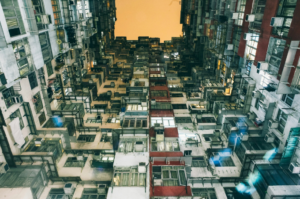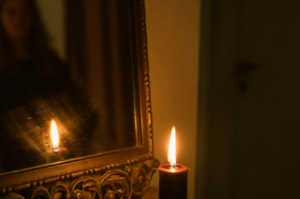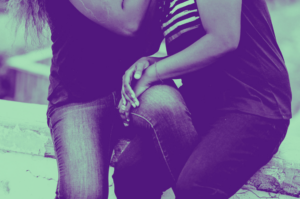
Life, as I have always lived it, is a cracked mirror with distorted reflections, jagged edges, and all-too-brief moments of clarity. To the untrained eye, my existence seems like chaos, a mad dash through surreal absurdities. To me, it is art, raw, unscripted, and shameless.
I grew up barefoot on the volcanic shores of Saint Lucia, where the sand burned my feet but the freedom was worth every sting. My father called me ‘têt di feu,’ hot-headed, but what he saw as rebellion, I called truth. I remember the first time I confronted society’s fear of the human body. I was fourteen, straddling two worlds: the Catholic guilt of my upbringing and the pull of naturism, which felt more like home than any church pew. My friends laughed when I stripped down at Anse Chastanet beach. “Nahna fou!” they said, Nahna’s crazy! Maybe they were right. But when the sea breeze kissed my bare skin, I wasn’t crazy; I was free.
Absurd Truths and Circles
It is absurd, though, isn’t it? The way people talk in circles about freedom while binding themselves with invisible chains. I often feel like a character in one of those avant-garde plays, where the dialogue loops endlessly, and someone mutters, “Nothing to be done.” Most days I stand naked on that beach, arms outstretched, and whisper to myself, This life flies; one thing is certain, and the rest is lies. Yet, as much as I love the freedom, conflict is my constant companion. You think the world embraces authenticity? You’re wrong. People fear what they can’t categorize. A bisexual, nudist, poet, and painter? That was too much for the average mind. They want me to pick a box, fit inside, and stay there. I refuse.
The Night the Bonfire Burned Too Bright
One night, on a secluded beach, a bonfire lit the night sky, and I shared my philosophy with a group of hesitant friends. Kwéyòl and English danced together in the air. “Ou sav, nudity is not just body,” I said. “It’s mouvement. It’s spirit. It’s rebellion against shame.”
“Rebellion?” one guy snickered, his eyes flickering down to my body and back up. “Yes, rebellion,” I shot back, my voice sharp enough to cut through the crackling flames. “You wear clothes because you’re told to. Not because you need to. What else are you covering up?” He didn’t answer, but his silence said everything.
Later that night, a girl named Amandine approached me. Her accent was thick with the rhythm of the island. “Nahna,” she whispered, “I envy you. But when I try, my body feels… exposed. Judged.”
“By who?” I asked, my frustration boiling over. “By them or by you?” She didn’t answer either. I saw the tears in her eyes, though, and softened my tone. “Amandine, tout bagay sé an ti pas.” Everything is a little step. “Start with the mirror. Look at yourself. Learn yourself. Then no one can use your body to shame you. Not even you.”
The Battle of the Boners
But not all encounters were so poignant. There was the guy—always a guy—who saw my nakedness as an invitation. Nudity wasn’t sexual to me, but to him, it was a spectacle. When he got aroused during a group photoshoot, I could tell from the tension in his jaw that he was mortified. “Relax,” I said, keeping my tone light but firm. “It’s just biology. But if you’re here to leer, you’re in the wrong place.”
He stammered, “I—I thought this was about freedom.”
“It is,” I replied. “Freedom to exist. Not to exploit.”
That moment stayed with me, though. Nudism, I realized, wasn’t just about shedding clothes. It was about unlearning centuries of shame and fear. But how do you teach a world to see the human body as art, not a commodity?
A Lonely Road
The naturist community isn’t always welcoming either. Despite their rhetoric about inclusivity, many spaces discriminated against men. They feared us, always assuming we can’t separate nudity from sex. I understand their concerns; there are too many stories of harassment, but their solutions regardless; often feels like punishment, not progress. “Men are not the enemy,” I once argued at a naturist club meeting. “The enemy is ignorance. Shame. The idea that nudity is inherently dangerous.” Some nodded. Most didn’t. I left that night feeling more isolated than ever. As I wandered home under a sky full of stars, Omar Khayyam’s words haunted me: “The flower that once has blown forever dies.” Life was fleeting, and here we were, wasting it on fear. I don’t want to die without having truly lived, without having planted the seeds of freedom for someone else.
Art in Absurdity
And so, I keep going, painting, taking photos, writing, and performing. My work is abstract, but it always carries a message. “Life is a dance,” I’d say to anyone who’d listen. “You can sit in the corner, fully clothed, or you can strip down and join the music.” Am I rogue? A fool? Maybe. But I will survive by my wits and thrive in my truth. Life isn’t neat; it isn’t meant to be. It is absurd, chaotic, and beautiful. And so am I.
Photo by SHVETS production from Pexels










COMMENTS -
Reader Interactions